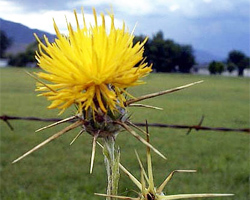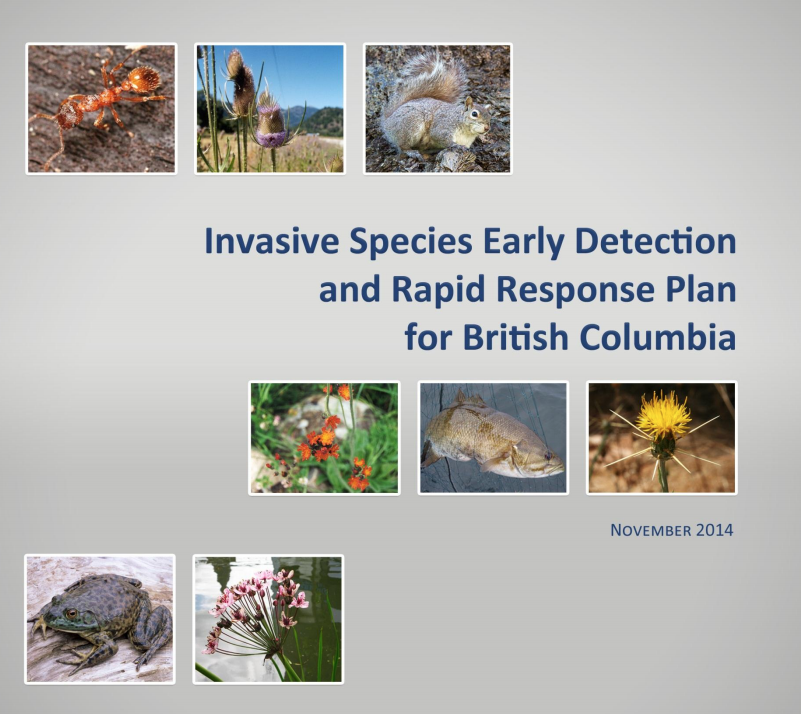Invasive species early detection and rapid response (EDRR)
The B.C. government's approach to invasive species is to find, identify, and systematically eradicate, contain or control new invasive species before they can reproduce and disperse beyond their point of entry.
On this page
Early detection of newly arrived invasive species, followed by a well-coordinated rapid response, will increase the likelihood of eradication or containment of new invasions and is the most cost-effective means for controlling invasive species.
The B.C. government invasive species early detection and response activities are guided by the B.C. Invasive Species Early Detection Rapid Response Plan (EDRR). The plan provides detailed direction on the decisions and actions required to address new incursions anywhere in B.C.
Invasive species within the Provincial EDRR Process
Invasive Plants within the Provincial EDRR Process are not present in B.C., or are present but limited in extent and being actively managed with the goal of eradication from B.C.. These plants pose a significant threat to B.C.'s environment, economy, and/or human health.
They are identified as a result of an extensive review that considered their regulation and status in B.C. and bordering jurisdictions, presence elsewhere in similar environments to those that occur in B.C., and listing on the Canada Food Inspection Agency Least Wanted Plant List (2010).
Learn more about Provincial Early Detection and Rapid Response Species:
- Priority Invasive Species in B.C.
- Invasive Plant Candidates for Eradication (PDF, 208KB)
- Status of Invasive Plants within the Provincial EDRR Process
To increase the likelihood that new incursions of zebra and quagga mussels will be discovered and eradicated before they become widely established in the province, the B.C. government has implemented the Zebra and Quagga Mussel Early Detection and Rapid Response Plan for B.C.
- Zebra and Quagga Mussel Early Detection and Rapid Response Plan for B.C. (PDF, 3.2MB)
- Learn more about zebra and quagga mussels
- Status of Invasive Plants within the Provincial EDRR Process (make a hidden page with a table with the spreadsheet information)
Early detection and rapid response to invasive species activities occur in partnership with the Canadian Food Inspection Agency and with cooperation and participation of key land managers and stakeholders throughout B.C. and neighbouring jurisdictions.
Early detection and rapid response steps
Step 1–early detection
- Unknown species found
- Species identified (if possible) and reported
- Provincial government invasive plant specialist determines if species is new or existing in B.C.
- New species are reported to the B.C. early detection rapid response (EDRR) Coordinator
Step 2–identification
- Species identification confirmed by B.C. early detection rapid response coordinator in partnership with the Royal BC Museum and, if needed, a botanical network of specialists from the Pacific Northwest
Step 3–alert screening
- The B.C. government contains new species sites to prevent spread
- If species regulated by the federal Canadian Food Inspection Agency (CFIA), EDRR coordination is transferred to that agency and B.C. participates as a stakeholder
- If species is not regulated by CFIA, the B.C. EDRR coordinator completes coarse screening
- Site habitat is assessed and the local extent of the infestation is determined
- Provincial government contains new species sites to prevent spread
- B.C. EDRR Advisory, with support from the Coordinator, determines if species is or should be prohibited in B.C.
Step 4–risk assessment
- Species risk is assessed and rated by the B.C. EDRR advisory, with support from the coordinator. (Note: Many prohibited weeds will have risk assessments completed prior to their first detection in B.C.)
- High and medium risk species are contained by the provincial government to prevent spread
Step 5–rapid response
- B.C. EDRR coordinator, with support from subject experts, develops a rapid response plan
- Treatment permits are obtained
- Treatments are completed
Step 6–monitor and reassess
- Treatments are evaluated for efficacy
- Response is adjusted
- Annual report is completed and data entered into provincial database and mapping application
- Monitoring plan is developed for eradicate species (Note: It may take several years before eradication can be achieved for some species)


